Friday, January 6, 2012
Every year in November and December we have several buildings that have to be emptied, cleaned, disinfected and made ready for next year's duck breeders. Whether you are cleaning a 7200 sq. ft. building or a backyard coop, the process is the same. I will show you the steps we follow, using our Building 3 as an example.
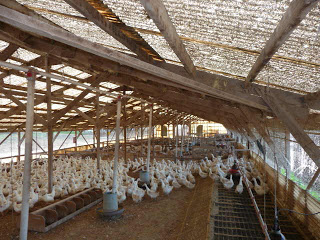
Building 3 before the cleanout - White Layers, Buff, Mallard and Fawn & White Runners
1) Before you do anything else, make sure your rodent bait stations are full. Typically you remove feed from the building or put it away for a brief time when you clean. If you have any rodents, their normal feed may be gone and they will be looking for alternative sources. They may now eat that bait that has otherwise been ignored.
1) Before you do anything else, make sure your rodent bait stations are full. Typically you remove feed from the building or put it away for a brief time when you clean. If you have any rodents, their normal feed may be gone and they will be looking for alternative sources. They may now eat that bait that has otherwise been ignored.
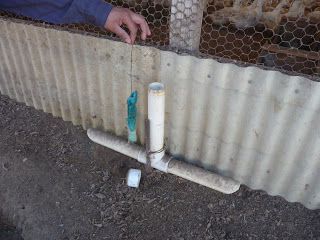
2) Move your birds out of the building. This may be as simple as putting them outside for the day or moving them to a new pen. The best time to clean a building is when that flock is done laying - either they are molting or you will sell them. We do not clean out the litter until a flock is leaving and a new one is coming in - once a year. We add bedding once or twice a week so by the end of a year, it is up to 12" deep.
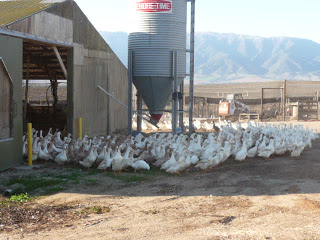
Moving the old breeders to our Sell Pen.
3) Remove all equipment from the building: nest boxes, fences, feeders, floors under waterers, etc. Ideally you can use a pressure washer to wash all your equipment. Remove all the dirt and organic matter with the first wash. Then use a disinfectant to sanitize everything. There are various types of disinfectants available: chlorines, iodines, phenols and quats. Disinfectants containing phenols seem to be most effective in cleaning our buildings.
3) Remove all equipment from the building: nest boxes, fences, feeders, floors under waterers, etc. Ideally you can use a pressure washer to wash all your equipment. Remove all the dirt and organic matter with the first wash. Then use a disinfectant to sanitize everything. There are various types of disinfectants available: chlorines, iodines, phenols and quats. Disinfectants containing phenols seem to be most effective in cleaning our buildings.
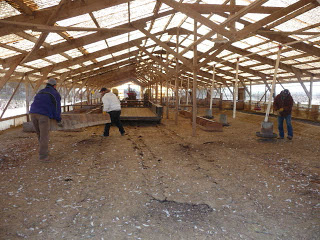
The divider fences are out. Nacho, Juan and Guillermo are now removing nest boxes and feeders.
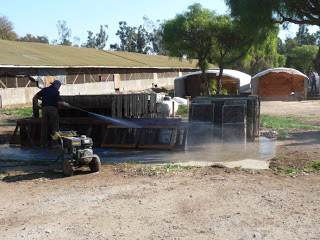
Nacho washing fences, ramps to the waterers, feeders, etc.
4) Remove all the bedding and manure from the building. This is an excellent soil amendment as is or pile and compost it before adding it to your soil. The carbon:nitrogen ratio is perfect for our litter so it composts quite rapidly on its own after removal. When you remove the bedding, oxygen is added with all the mixing. This oxygen rejuvenates the bacteria in the bedding and often we see water vapor rising from the heating piles of bedding within a day or two of removal.
4) Remove all the bedding and manure from the building. This is an excellent soil amendment as is or pile and compost it before adding it to your soil. The carbon:nitrogen ratio is perfect for our litter so it composts quite rapidly on its own after removal. When you remove the bedding, oxygen is added with all the mixing. This oxygen rejuvenates the bacteria in the bedding and often we see water vapor rising from the heating piles of bedding within a day or two of removal.
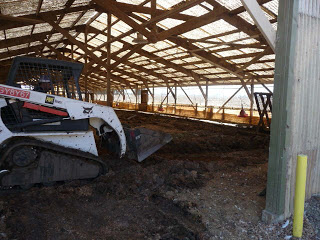
Guillermo is using the Bobcat to clean near the waterers, notice the bedding is moist.
Continue Reading
Continue Reading